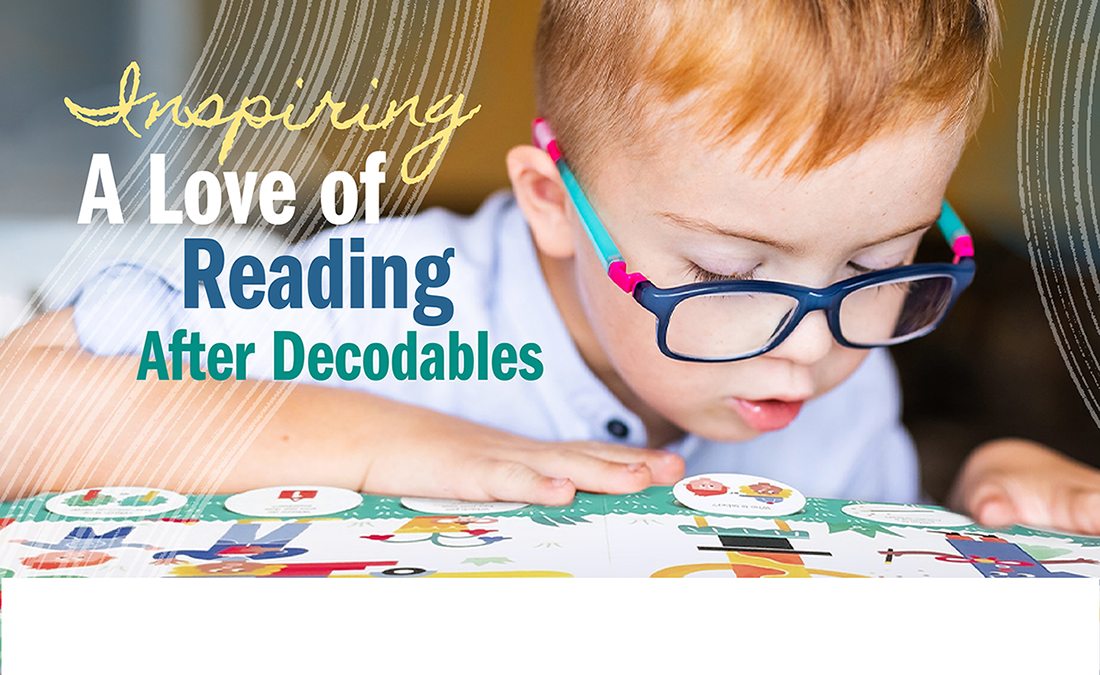.png)

Your Students Have Conquered Decodables. Now What? | Booksource
Share on Social
We all want to equip students with the essential skills they need to become confident and proficient readers. Teaching students to decode words is a crucial step in their reading journey, but it is equally important to provide them with the right books once they have mastered this skill to encourage a lifelong love of reading.
Once students have conquered decoding words and demonstrate fluency, follow these six steps to introduce them to books that allow them to apply (and enjoy!) their newfound skills.
Provide access to a wide range of books.
Create a classroom library (or let our classroom reading experts create one for you!) that offers a varied selection of books across genres, topics and reading levels. Ensure that the library is regularly updated with new and engaging titles to keep students excited about exploring many types of literature.
Offer a diverse selection of books.
Representation matters, and when students see themselves and others in the literature they read, it not only validates their identities but also broadens their perspectives. Choose books that feature characters with different abilities, gender identities, socioeconomic backgrounds and family structures. By exposing students to diverse literature, we foster inclusivity and create opportunities for students to develop a deeper understanding of the world, promoting empathy, compassion and a respect for differences. If you need help ensuring your classroom library features the kind of inclusive content best for your students, check out our free inclusive classroom library checklist.
Encourage students to choose books that align with their interests.
Offering a wide range of book options to students increases the chance that they will find something matched to their personal interests. It also allows them to feel ownership over their reading experiences and nurtures a sense of autonomy. Best of all, research shows that when students can choose their own books that interest them, they are more likely to be engaged and motivated to read. Not sure what interests your students? Have them fill out the Student Interest Inventory, where they can list or draw the topics, people and things that they’d like to read about.
Use independent reading time to foster a love of reading.
Dedicate time for students to explore books of their choosing to help develop their reading stamina, fluency and comprehension skills. It also encourages a lifelong habit of reading for pleasure, which is essential for continued growth and development as readers. Allow your students to share what they’re reading during independent time with these printable What I’m Reading cards.
Share reading recommendations.
Introduce students to new books and authors by sharing personal recommendations or conducting book talks. Share your enthusiasm for literature and highlight the unique features and appeal of each book. Encourage students to share their favorite reads as well by completing their own Book Recommendation fun form, which can help create a community of book lovers within the classroom.
Make reading fun!
The value of mastering decoding is to grow as a successful (and joyful!) reader. Engage students in reading challenges or games that inspire them to set personal reading goals and track their progress.
Nurturing a passion for reading
Decoding words is an important milestone in a student's reading journey, but it is only the beginning. Once students have conquered this skill, it is essential to provide them with a wide range of books that reinforce their decoding abilities while fostering comprehension, fluency and a love for reading. The ultimate goal is to empower our students to become lifelong readers who can navigate the vast world of literature with ease and enthusiasm.
Happy reading!
